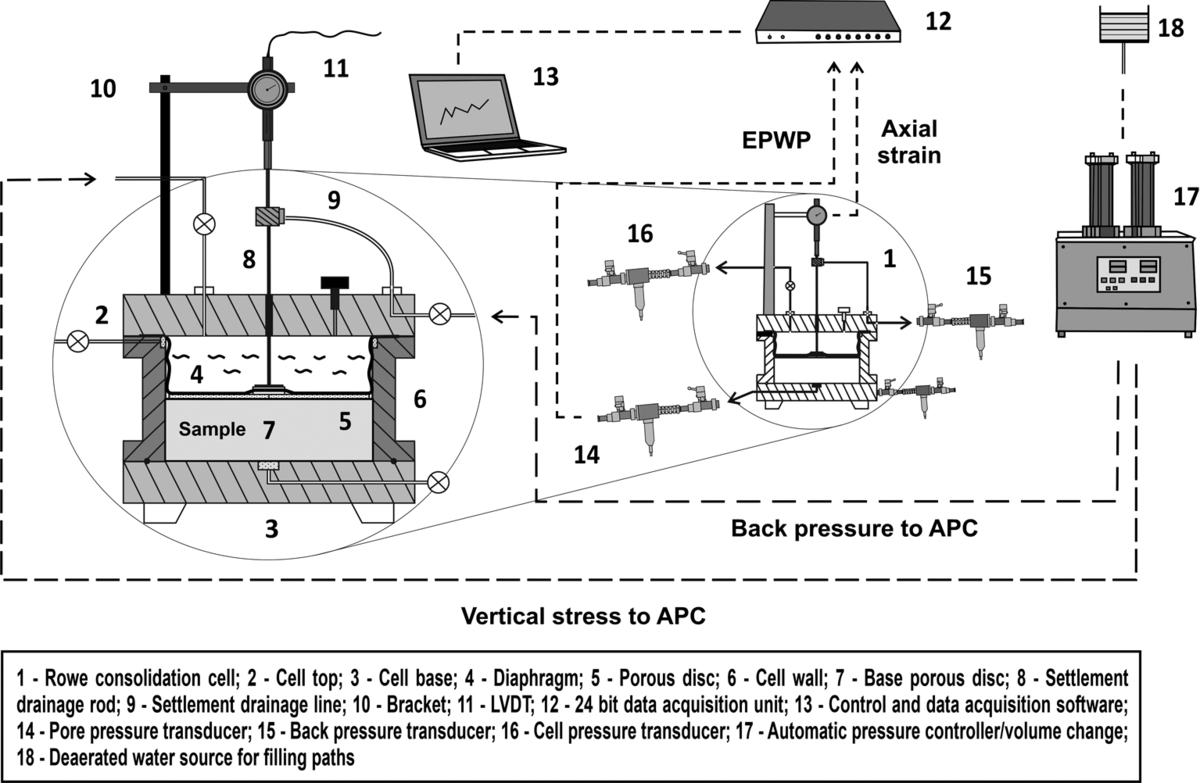Determining the end of primary consolidation parameters based on settlement and excess pore water pressure
1
Department of Geotechnics and Strength of Materials, Politechnika Krakowska im. Tadeusza Kościuszki, Poland
Submission date: 2023-12-29
Final revision date: 2024-03-27
Acceptance date: 2024-04-09
Publication date: 2025-06-16
Corresponding author
Bartłomiej Szczepan Olek
Department of Geotechnics and Strength of Materials, Politechnika Krakowska im. Tadeusza Kościuszki, Warszawska 24, 31-155, Krakow, Poland
Department of Geotechnics and Strength of Materials, Politechnika Krakowska im. Tadeusza Kościuszki, Warszawska 24, 31-155, Krakow, Poland
Archives of Civil Engineering 2025;71(2):641-657
KEYWORDS
TOPICS
ABSTRACT
The multiple-stage loading with reloading at EOP tests were carried out on two high-plasticity remoulded clays. One percentage of the initial value of an excess pore water pressure has been adopted as a reference for the end of the primary consolidation criterion. Based on the measurements of the settlement with time, six methods were used for determining the EOP parameters. For all studied consolidation curves, the primary consolidation time determined by settlement data was always smaller than those specified by dissipation data. All analysed cases have observed the lack of complete dissipation at the primary consolidation time determined by settlement data. The magnitude of remaining pore pressure at the primary consolidation time determined by various methods and the degree of additional settlement induced by remaining pore pressure at the primary consolidation time indicate an underestimation of EOP parameters when the interpretation of the test is based only on the analysis of sample settlement. Based on the average degree of consolidation imposed by the excess pore water pressure dissipation at primary consolidation time, the most similar time values at EOP to that determined using the excess pore water pressure dissipation criterion were obtained using the SRS, Casagrande and Slope methods.
Share
RELATED ARTICLE
We process personal data collected when visiting the website. The function of obtaining information about users and their behavior is carried out by voluntarily entered information in forms and saving cookies in end devices. Data, including cookies, are used to provide services, improve the user experience and to analyze the traffic in accordance with the Privacy policy. Data are also collected and processed by Google Analytics tool (more).
You can change cookies settings in your browser. Restricted use of cookies in the browser configuration may affect some functionalities of the website.
You can change cookies settings in your browser. Restricted use of cookies in the browser configuration may affect some functionalities of the website.




